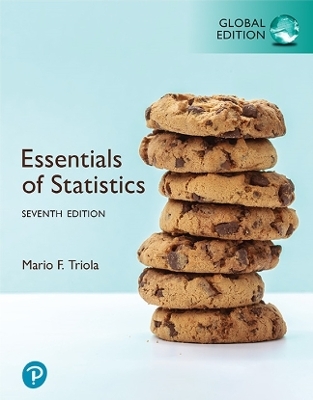
Statistical DNA Forensics – Theory, Methods and Computation
Wiley-Blackwell (Hersteller)
978-0-470-72704-1 (ISBN)
- Keine Verlagsinformationen verfügbar
- Artikel merken
Statistical methodology plays a key role in ensuring that DNA evidence is collected, interpreted, analyzed and presented correctly. With the recent advances in computer technology, this methodology is more complex than ever before. There are a growing number of books in the area but none are devoted to the computational analysis of evidence. This book presents the methodology of statistical DNA forensics with an emphasis on the use of computational techniques to analyze and interpret forensic evidence.
Wing Kam Fung - Department of Statistics and Actuarial Science, University of Hong Kong With 20 years of lecturing and research experience, Professor Fung has been invited many times to give talks at workshops and international conferences. He has written over 130 papers in statistics, DNA profiling and forensic science, and is currently an Associate Editor for 4 statistical journals. Yue-Qing Hu - Department of Mathematics, Southeast University An Associate Professor, Yue-Qing Hu has published over 30 refereed papers, a number of these with Wing Kam Fung.
Preface. List of figures. List of tables. 1. Introduction. 1.1 Statistics, forensic science and the law. 1.2 The use of statistics in forensic DNA. 1.3 Genetic basis of DNA profiling and typing technology. 1.3.1 Genetic basis. 1.3.2 Typing technology. 1.4 About the book. 2. Probability and statistics. 2.1 Probability. 2.2 Dependent events and conditional probability. 2.3 Law of total probability. 2.4 Bayes' Theorem. 2.5 Binomial probability distribution. 2.6 Multinomial distribution. 2.7 Poisson distribution. 2.8 Normal distribution. 2.9 Likelihood ratio. 2.10 Statistical inference. 2.10.1 Test of hypothesis. 2.10.2 Estimation and testing. 2.11 Problems. 3. Population genetics. 3.1 Hardy-Weinberg equilibrium. 3.2 Test for Hardy-Weinberg equilibrium. 3.2.1 Observed and expected heterozygosities. 3.2.2 Chi-square test. 3.2.3 Fisher's exact test. 3.2.4 Computer software. 3.3 Other statistics for analysis of a population database. 3.3.1 Linkage equilibrium. 3.3.2 Power of discrimination. 3.4 DNA profiling. 3.5 Subpopulation models. 3.6 Relatives. 3.7 Problems. 4. Parentage testing. 4.1 Standard trio. 4.1.1 Paternity index. 4.1.2 An example. 4.1.3 Posterior odds and probability of paternity. 4.2 Paternity computer software. 4.2.1 Steps in running the software. 4.2.2 The software to deal with an incest case. 4.3 A relative of the alleged father is the true father. 4.4 Alleged father unavailable but his relative is. 4.5 Motherless case. 4.5.1 Paternity index. 4.5.2 Computer software and example. 4.6 Motherless case: relatives involved. 4.6.1 A relative of the alleged father is the true father. 4.6.2 Alleged father unavailable but his relative is. 4.6.3 Computer software and example. 4.7 Determination of both parents. 4.8 Probability of excluding a random man from paternity. 4.9 Power of exclusion. 4.9.1 A random man case. 4.9.2 A relative case. 4.9.3 An elder brother case: mother available. 4.10 Other issues. 4.10.1 Reverse parentage. 4.10.2 Mutation. 4.11 Problems. 5. Testing for kinship. 5.1 Kinship testing of any two persons: HWE. 5.2 Computer software. 5.3 Kinship testing of two persons: subdivided populations. 5.3.1 Joint genotype probability. 5.3.2 Relatives involved. 5.4 Examples with software. 5.5 Three persons situation: HWE. 5.6 Computer software and example. 5.7 Three persons situation: subdivided populations. 5.7.1 Standard trio. 5.7.2 A relative of the alleged father is the true father. 5.7.3 Alleged father unavailable but his relative is. 5.7.4 Example. 5.7.5 General method and computer software. 5.8 Complex kinship determinations: method and software. 5.8.1 EasyPA-In-1-Minute software and the method. 5.8.2 EasyPAnt-In-1-Minute. 5.8.3 EasyIN-In-1-Minute. 5.8.4 EasyMISS-In-1-Minute. 5.8.5 Other considerations: probability of paternity and mutation. 5.9 Problems. 6. Interpreting mixtures. 6.1 An illustrative example. 6.2 Some common cases and a case example. 6.2.1 One victim, one suspect and one unknown. 6.2.2 One suspect and two unknowns. 6.2.3 Two suspects and two unknowns. 6.2.4 Case example. 6.2.5 Exclusion probability. 6.3 A general approach. 6.4 Population in Hardy-Weinberg equilibrium. 6.5 Population with multiple ethnic groups. 6.6 Subdivided population. 6.6.1 Single ethnic group: simple cases. 6.6.2 Single ethnic group: general situations. 6.6.3 Multiple ethnic groups. 6.7 Computer software and example. 6.8 NRC II Recommendation 4.1. 6.8.1 Single ethnic group. 6.8.2 Multiple ethnic groups. 6.9 Proofs. 6.9.1 The proof of Equation (6.6). 6.9.2 The proof of Equation (6.8). 6.9.3 The proof of Equation (6.9). 6.9.4 The proofs of Equations (6.11) and (6.12). 6.9.5 The proofs of Equations (6.14) and (6.15). 6.10 Problems. 7. Interpreting mixtures in the presence of relatives. 7.1 One pair of relatives: HWE. 7.1.1 Motivating example. 7.1.2 A probability formula. 7.1.3 Tested suspect with an unknown relative. 7.1.4 Unknown suspect with a tested relative. 7.1.5 Two related persons were unknown contributors. 7.1.6 An application. 7.2 Two pairs of relatives: HWE. 7.2.1 Two unknowns related respectively to two typed persons. 7.2.2 One unknown is related to a typed person and two other. unknowns are related. 7.2.3 Two pairs of related unknowns. 7.2.4 Examples. 7.2.5 Extension. 7.3 Related people from the same subdivided population. 7.3.1 Introductory example. 7.3.2 A simple case with one victim, one suspect and one relative. 7.3.3 General formulas. 7.3.4 An example analyzed by the software. 7.4 Proofs. 7.4.1 Preliminary. 7.4.2 The proof of Equation (7.5). 7.4.3 The proof of Equation (7.7). 7.4.4 The proof of Equation (7.9). 7.4.5 The proof of Equation (7.11). 7.4.6 The proof of Equation (7.13). 7.4.7 The proofs of Equations (7.18) and (7.20). 7.5 Problems. 8. Other issues. 8.1 Lineage markers. 8.2 Haplotypic genetic markers for mixture. 8.3 Bayesian network. 8.4 Peak information. 8.5 Mass disaster. 8.6 Database search. Solutions to Problems. Appendix A: The standard normal distribution. Appendix B: Upper 1% and 5% points of w2 distributions. Bibliography. Index.
| Erscheint lt. Verlag | 1.3.2008 |
|---|---|
| Verlagsort | Hoboken |
| Sprache | englisch |
| Maße | 174 x 251 mm |
| Gewicht | 606 g |
| Themenwelt | Mathematik / Informatik ► Mathematik ► Statistik |
| Naturwissenschaften ► Chemie ► Analytische Chemie | |
| ISBN-10 | 0-470-72704-7 / 0470727047 |
| ISBN-13 | 978-0-470-72704-1 / 9780470727041 |
| Zustand | Neuware |
| Haben Sie eine Frage zum Produkt? |
aus dem Bereich
